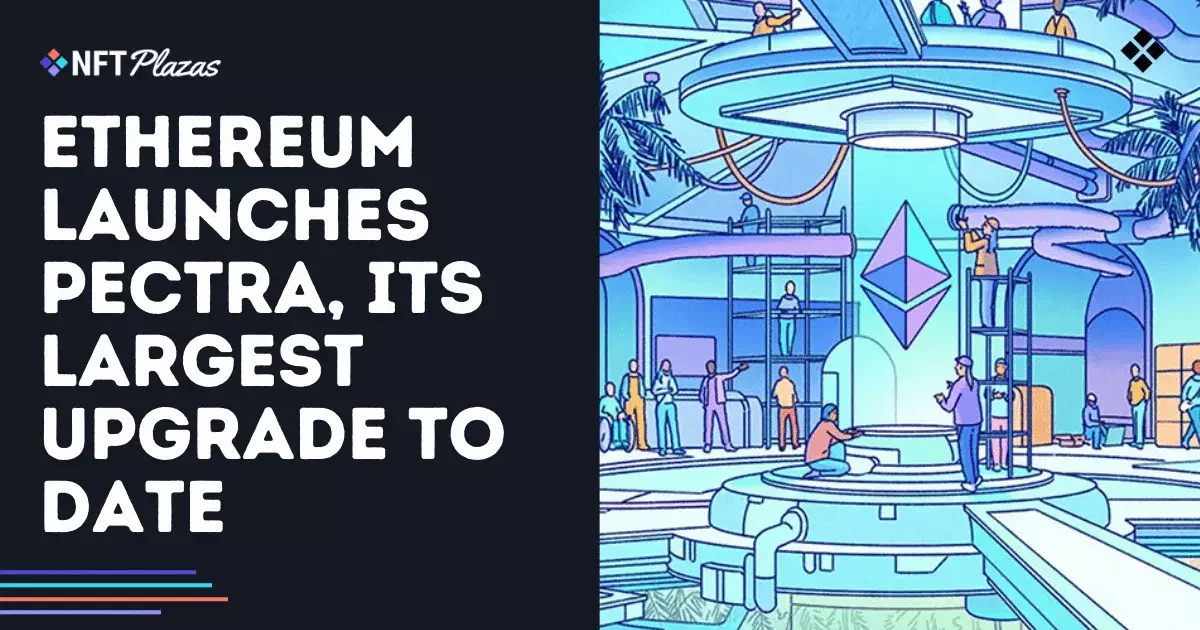The Ethereum blockchain has always been at the forefront of innovation within the cryptocurrency sector. Its recent software update, dubbed “Pectra,” marks a pivotal moment in its evolution. Set against the backdrop of a rapidly growing NFT ecosystem, the upgrade foretells monumental transformations for users and developers alike. The importance of recognizing these shifts cannot be overstated, particularly from a center-right perspective that values both innovation and economic prudence. While changes are universally expected in this ever-evolving digital landscape, Pectra is a strategic maneuver that aims to improve scalability, which is long overdue.
In contrast to its predecessor, the Dencun upgrade, which was merely a stepping stone, Pectra introduces fundamentally new enhancements. The navigation through such technical changes can be quite daunting, yet for someone invested in Ethereum’s technological prowess and the average user’s experience, this upgrade signifies hope for a more streamlined and functional platform.
Revolutionary Changes That Matter
Central to the Pectra update are several Ethereum Improvement Proposals (EIPs) that collectively enhance the network’s framework. Specifically, EIP-7702 allows standard user accounts to mimic smart contract behavior. This aspect is exceptionally crucial for those who find the current model user-unfriendly. The transition to a more “account-abstracted” format is not merely a cosmetic upgrade; it fundamentally shifts the accessibility of blockchain technology for everyday users. Embracing this flexibility can invigorate the user base and draw in a wider audience, potentially leading to economic boons, particularly for creators in the NFT space.
Validator staking, encapsulated within EIP-7251, reflects a shift toward operational efficiency by increasing the maximum stake permitted for validators from 32 to 2,048 ETH. This might appear as a technical modification, but its implications ripple throughout the ecosystem, affecting staking rewards and operational resilience. Encouraging larger validators to centralize their efforts could streamline operations but poses the risk of creating an oligopoly within validator nodes. The balance between decentralization and efficiency is a nuanced one; it requires careful calibration to ensure that Ethereum’s tenets are not sacrificed in pursuit of performance.
The Fine Line of Capacity: Blobs and Beyond
Further bolstering Ethereum’s scalability, EIP-7691 increases the number of “blobs” from three to six per block. “Blobs,” or off-chain data packages, have instrumental roles in reducing transaction costs, especially for Layer 2 solutions. The critical question here is whether these incremental gains will suffice as Layer 2 adoption accelerates. The Ethereum network stands at a crossroads; while Pectra seeks to bolster operational capacity, it also exposes the urgent need for additional scaling enhancements. Skepticism runs high among developers and users alike regarding whether the current adjustments will withstand future demand.
Moreover, the need for bandwidth and storage management in the face of increasing capacities presents an ironic dilemma; as the throughput of Ethereum enhances, so do the operational burdens on its validators. This juxtaposition illustrates the complexities inherent in blockchain updates. Furthermore, the ongoing evolution must consider the sustainability of a decentralized infrastructure. The promising future of Ethereum hinges on its ability to maintain decentralization while enhancing performance—a feat that has yet to be fully realized.
A Watchful Eye on the Future: The Fusaka Upgrade
Developers are already contemplating the next update, slated for a future dubbed ‘Fusaka.’ Its ambitions promise further expansion of data availability, notably incorporating PeerDAS, a protocol that will refine the accessibility of rollups. Yet, as appealing as this sounds, it begs the question: Can Ethereum realistically deliver on these lofty expectations? The cryptocurrency ecosystem is mired in rapid change, and without a concrete timeline or detailed plan, the hope that Fusaka will solve these looming issues remains speculative at best.
The Ethereum community stands at a thrilling yet precarious juncture. Stakeholders need to support innovative changes while also safeguarding fundamental values of decentralization. Balancing these dualities is crucial, not just for immediate scalability but for the long-term ethos of Ethereum as a resilient, decentralized platform where users and developers alike can thrive. As scrutiny continues to accompany such sweeping transformations, the industry waits with bated breath to see which direction Ethereum will take—toward promoting sustainable growth or falling prey to the pitfalls of its newfound power.


Leave a Reply